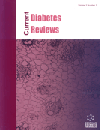
Full text loading...
We use cookies to track usage and preferences.I Understand
The incidence of diabetes mellitus (DM) is dramatically increasing worldwide, and it is expected to affect 700 million cases by 2045. Diabetes influences health care economics, human quality of life, morbidity, and mortality, which were primarily seen extensively in developing countries. Uncontrolled DM, which results in consistent hyperglycemia, may lead to severe life-threatening complications such as nephropathy, retinopathy, neuropathy, and cardiovascular complications.
In addition to traditional therapies with insulin and oral anti-diabetics, researchers have developed new approaches for treatment, including stem cell (SC) therapy, which exhibits promising outcomes. Besides its significant role in treating type one DM (T1DM) and type two DM (T2DM), it can also attenuate diabetic complications. Furthermore, the development of insulin-producing cells can be achieved by using the different types of SCs, such as embryonic stem cells (ESCs), induced pluripotent stem cells (iPSCs), and multiple types of adult stem cells, such as pancreatic, hepatic, and mesenchymal stem cells (MSC). All these types have been extensively studied and proved their ability to develop insulin-producing cells, but every type has limitations.
This review aims to enlighten researchers about recent advances in stem cell research and their potential benefits in DM and diabetic complications.

Article metrics loading...

Full text loading...
References


Data & Media loading...

